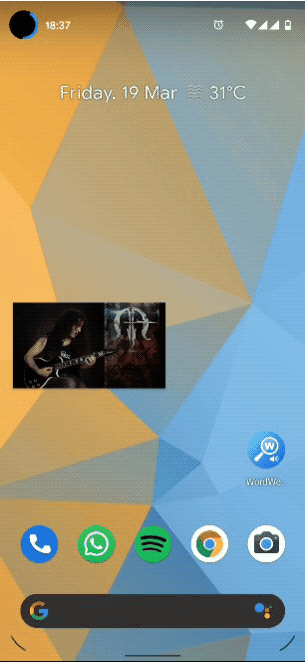Though it is still early days, the release of Android 12 Developer Preview 2 takes us one step closer to seeing Android 12 in its final form. Google is working to bring a bunch of UI overhauls, new services, and updates to existing features. One of these updates has to do with the Picture-in-Picture (PiP) mode, making it faster, easier to use, and less intrusive when you want it to be.
The PiP mode has constantly been fine-tuned over the years, allowing you to watch YouTube videos or having Map navigations in a smaller window while doing other things on your phone. But, if you required more space to view your open apps, you had to close the PiP window or move it around to see the screen.
Now, with DP2, users will be able to customize their PiP window in a few different ways and ‘stash’ it away if need be. Here’s a look at all that’s new in the PiP mode in Android 12.
Related: Android 12: How To Edit Any Image With Markup Editor
Pinch to Zoom (and more)
The first, and most important, change to PiP mode is the new ‘Pinch to Zoom’ feature. This will essentially allow you to resize the original PiP window to be larger or smaller by pinching with two fingers and zooming in or out, letting you view a larger part of the screen for other uses, like browsing the web. This is what it looks like:

Tapping inside the PiP window will show playback controls – play/pause, previous, next, and more. And if you double-tap the PiP window, it will switch between your customized size and the largest size – a quick-access gesture if you don’t want to set it to a customized size.

Related: What are Conversation Widgets in Android 12?
Stash PiP window to the side
Before, you could only either have the PiP window floating on the screen or you had to close it to make space, even if it was momentarily. That meant dragging the PiP window to the ‘X’ and then reopening it again.
But, as it is on DP2 right now, the PiP window can be ‘stashed’ to one side of the screen, where the media would still be playing and not become an eye-sore taking up space. This feature will be welcomed by many who don’t have YouTube Premium accounts and can’t play videos in the background.

The changes to the PiP window are not just restricted to YouTube but apply to all applications that support it, the likes of which include Google Maps, Google Duo, Netflix, and many more. The PiP mode revamp seems to work flawlessly as of now and it is all but certain that it will appear in the stable Android 12 version later this year. But only time will tell if that happens to be the case.
RELATED












Discussion